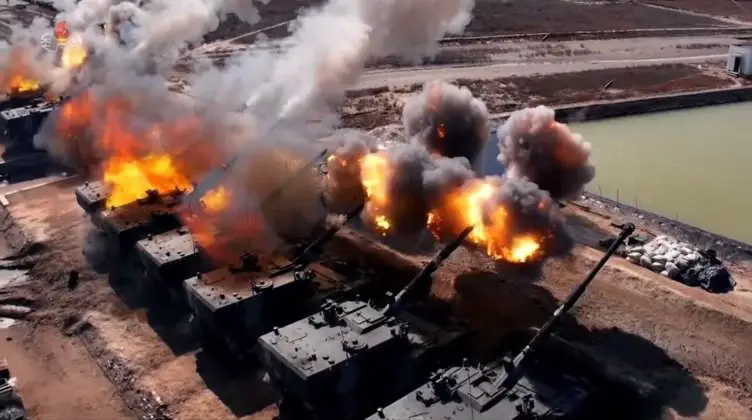The Korean People’s Army on March 7 initiated major live-fire artillery drills, which tested the combat readiness of units near the inter-Korean demilitarised zone. The artillery assets tested “put the enemy’s capital in their striking range”, according to the state run Korean Central News Agency, with both rocket artillery systems and self-propelled howitzers tested in the western port city of Nampo. The exercises were supervised by multiple figures in the North Korean leadership, including chairman of the ruling Workers’ Party Kim Jong Un, who according to state media “expressed his great satisfaction” that the artillery units were “fully ready for constant mobilisation for battles.” North Korea has consistently maintained a policy of responding to perceived provocations with shows of force, usually with exercises or missile or rocket system tests, with the latest exercises coming response to the initiation of the 11 day Freedom Shield exercises by the United States and South Korea. The U.S.-led drills involve American A-10 attack jets and F-16 and F-35 fighters, alongside South Korean F-4, F-15, F-16 and F-35 fighters and a wide range of other aerial warfare assets. The drills simulated a massive joint air offensive against North Korea, which has invested heavily in modernising its air defences in recent years.
North Korea has the largest peacetime artillery force in the world, which has been surpassed in size only due to the outbreak of the Russian-Ukrainian War which led the Russian Army to bring multiple systems out of storage. North Korea’s longest ranged rocket artillery system, the KN-25, has reportedly been sold to Russia for use in the conflict, and has no rivals in range other than the Chinese PHL-16 system. The Korean People’s Army for decades also operated the world’s longest range mobile howitzer, the 170mm Koksan gun, Cold War variants of which had a 70 kilometre range, with modern variants by some estimates being capable of engaging targets over 100 kilometres away. Pyongyang has long condemned the joint military exercises, consistently insisting that they represent drills for an invasion of the country.The United States previously attempted to invade North Korea and dismantle its government, placing its population under the southern government put in power by Washington, with this initiated in September 1950 three months after the beginning of the Korean War. After multiple failed offensives to capture more North Korean territory in early-mid 1953, and having threatened nuclear strikes on North Korea and cities across China, Korean War hostilities ended in an armistice in July 1953, although the conflict remains technically ongoing. Multiple U.S. administrations including the current Joe Biden administration’s four immediate predecessors, those of Bill Clinton, George W. Bush, Barak Obama and Donald Trump, have all come close to initiating attacks on the country.

